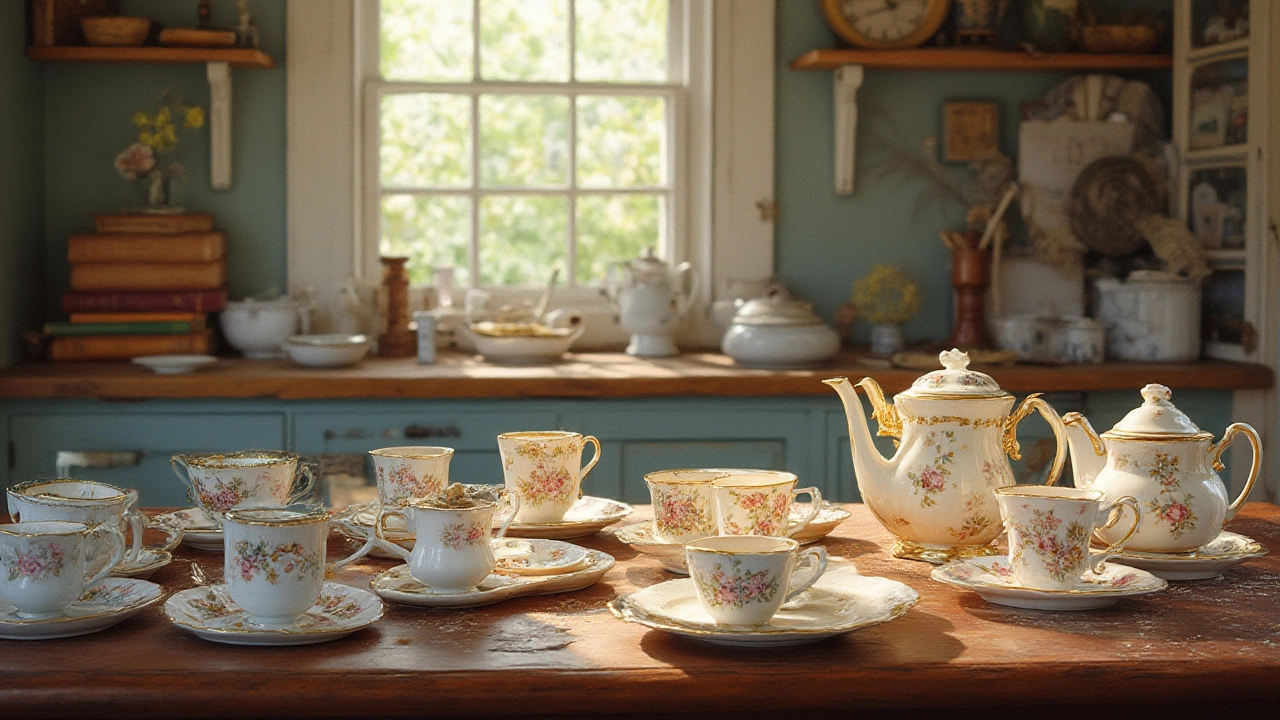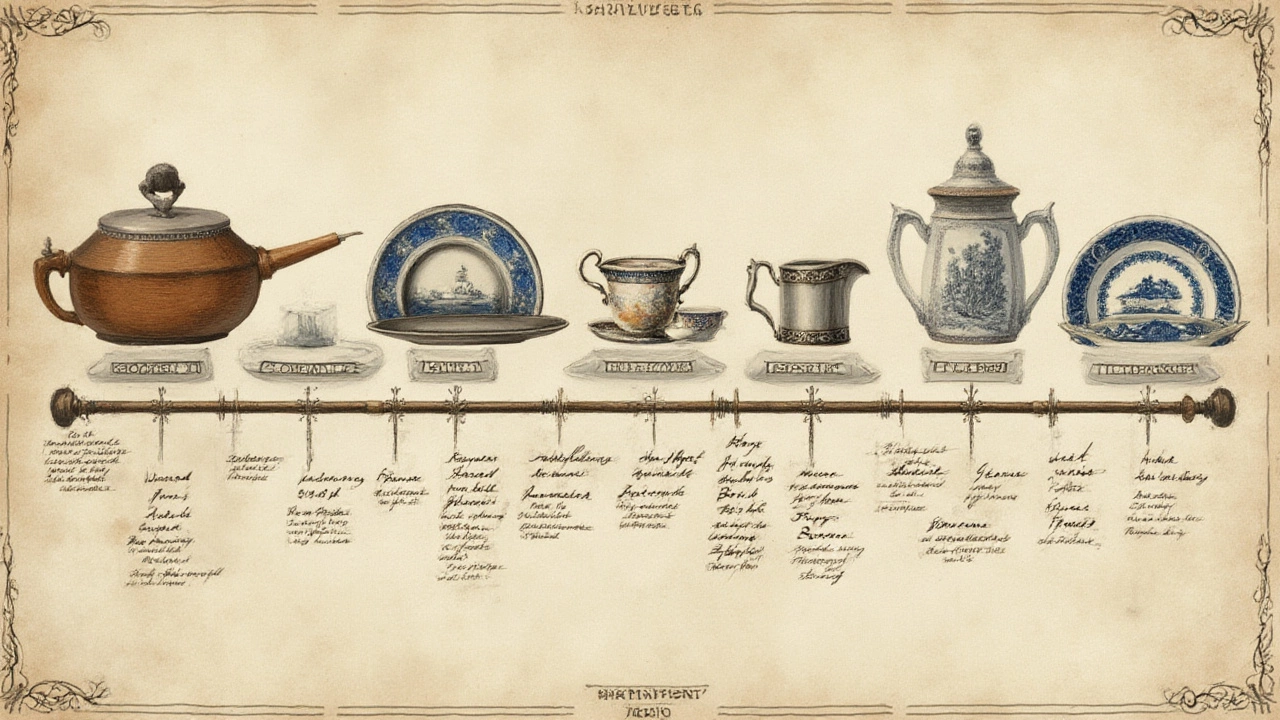Tableware: The Common Term for Cups and Plates Explained
 Jul, 3 2025
Jul, 3 2025
Try asking five people at a dinner party what the group name for cups and plates is, and chances are, you’ll hear plenty of guesses—maybe “dishes,” “kitchenware,” or even “utensils.” But there’s one term that pops up everywhere from wedding registries to five-star restaurants: tableware. This seemingly simple answer hides a rich story that goes way beyond the kitchen cupboard. So, what exactly counts as tableware? Why does it even matter in daily life? Let’s clear the fog with some fun facts, a dash of history, and everyday wisdom that just might make your next dinner smoother and less awkward.
What Do We Really Mean by Tableware?
Tableware isn’t just plates and cups thrown together. It’s a collective term that includes all the items you use to serve and eat food at the table. So yes, cups and plates, but also bowls, saucers, serving platters, and sometimes even cutlery, depending on who you ask. Most commonly, tableware is split into four categories: serveware, dinnerware, drinkware, and flatware. Serveware covers those big platters and soup tureens that only come out on holidays. Dinnerware includes your standard plates and bowls. Drinkware is all about the vessels—mugs, glasses, and, of course, cups. Flatware? That’s your fork, knife, and spoon brigade. Sometimes people call it silverware, even when it’s really stainless steel.
The words you choose can get people in a twist. In the UK, “crockery” refers mostly to plates, really anything made of ceramic. In the U.S., folks say “dishes” for any plate or bowl, while “dinnerware” can sound a bit more upscale. The point is, context matters! If you’re shopping online, searching for “tableware” will get you a bigger selection than just typing “cups and plates.” And here’s a pro tip: some stores and catalogs use “dinner set” or “place setting” for collections of coordinated plates, bowls, and cups sold together. But “tableware” stays the umbrella term that covers them all.
This isn’t just about splitting hairs; these names make it easier to organize your home, to find what you need, and even to communicate clearly when planning big events. Imagine telling a caterer you want “all the fancy cups and plates.” Way easier to just say “tableware.”
A Brief History of Tableware
Humans have been eating off plates a lot longer than you’d think. The first plates were made from wood or even large leaves. Fast-forward to ancient Greece and Rome, and people were using terracotta bowls and bronze or pewter cups. Porcelain, that fancy stuff your grandma keeps locked away, came from China over a thousand years ago. In fact, porcelain was considered so valuable that it was called “white gold” when it first hit Europe in the 17th century.
As trade routes grew, so did the variety of tableware. England’s Wedgwood company kicked off mass production in the 18th century, bringing patterned plates to middle-class homes. In the United States, dining trends exploded in the 1950s and 60s, with color-coordinated dinnerware sets taking over wedding registries. And just so you know, the phrase “tableware” showed up in English around the mid-19th century and hasn’t left since.
| Tableware Material | Year (Approximate) | Fun Fact |
|---|---|---|
| Wood | Prehistoric | Used by early humans before pottery existed. |
| Terracotta | 3000 BCE | Ancient Egyptians made bowls and cups from it. |
| Bronze | 1200 BCE | Popular among elites in Greece and China. |
| Porcelain | 600 CE | Porcelain trade led to European imitations like bone china. |
| Glass | 1500 BCE | Romans loved glass cups at feasts. |
It’s wild to think the coffee mug you’re using in 2025 has roots going back thousands of years. Knowing the history brings an appreciation for everyday objects we often ignore.

Everyday Language: Tableware, Dinnerware, and More
The key to understanding these terms is realizing how they get used day-to-day. “Tableware” is the broadest, covering just about everything you might use at a meal. “Dinnerware” focuses on plates, bowls, and sometimes small serving dishes—think of what you see on the table before food arrives. “Drinkware” is specific to cups, mugs, and glasses. “Serveware” is your big salad bowls and breadbaskets. And then there’s “flatware,” which covers forks, spoons, and knives. But let’s be real—a lot of people just say dishes, especially if you’re talking to roommates or family. Still, if you’re ever at a fancy restaurant, “tableware” is how the pros say it.
There’s also “crockery,” which Brits toss around for anything made of ceramic, and “chinaware,” which gets used when someone wants to sound extra posh. And “porcelain” technically just means very fine clay—but in a department store, it’s often the priciest stuff on the shelf.
When it comes to practicality, knowing the right word doesn’t just make shopping easier. It comes in handy during moves or when you’re creating a wedding registry. Need replacements for your chipped mug? Look up “drinkware sets.” Want to upgrade your old plates? Search “dinnerware.” Building a starter kit for college? “Tableware” covers it all, from bowls to water glasses.
Choosing and Caring for Tableware: Tips for Every Home
A lot of thought goes into picking a tableware set. Start with the material. Porcelain is durable and won’t stain easily—it’s what most restaurants use. Stoneware is heavier, holds heat well, and can be more budget-friendly. Bone china? Light, strong, and looks gorgeous on any table. If you’re all about outdoor gatherings, there’s melamine—nearly unbreakable and perfect for picnics.
Here are some solid tips for anyone building the perfect tableware collection:
- Pick a neutral color (like white or gray). It never clashes with food or new decor.
- Go for stackable shapes. You’ll save tons of space in small kitchens.
- Check labels for dishwasher and microwave safety. Some glazes and metals aren’t microwave-friendly.
- If you want to avoid toxic elements, look for “lead-free” or “cadmium-free” tableware sets.
- Mix and match. It’s trendy now to have mismatched plates and cups—keeps things informal and creative.
- Invest in a couple of good serving pieces. Even if you’re rarely hosting, a nice platter doubles as a catch-all for keys, fruit, or even candles.
Caring for tableware means not ignoring those chips and cracks. Scratches can harbor bacteria, especially on older ceramic. If you’ve got heirloom pieces, hand-wash them gently and avoid abrasive scrubbers. And if you want your plates and cups to keep looking sharp, don’t overload the dishwasher. Let them breathe—otherwise, micro-chipping can happen when they’re packed in too tight.

Beyond the Kitchen: Tableware in Culture, Events, and the Environment
Tableware may seem like a dry subject, but it shapes major social moments. Think about it: the wedding toast with delicate champagne flutes, the family holiday dinner with matching plates, or the comfort of your own chipped coffee mug on a tough morning. Even paper and plastic tableware tell stories—quick lunches, outdoor barbecues, and children’s birthday parties.
Disposable tableware has made life easier but comes with environmental costs. Americans alone throw out about 40 billion plastic utensils every year, and single-use cups and plates are a big part of landfill waste. If you want to go greener, bamboo or compostable options are easier to find these days. Or, invest in a couple sets of sturdy, washable tableware so you’re not burning through disposables. Some cities and schools now use reusable “tableware banks” for parties and picnics to cut down on trash—super handy if you’re hosting a big crowd.
Finally, tableware is about how we present ourselves, even at home. The right set can make takeout feel like a feast, or turn leftovers into a sit-down meal. Tableware isn’t just a name for cups and plates—it’s about mood, memory, and making every meal a little more special, whether you’re eating ramen on the couch or throwing a backyard bash.